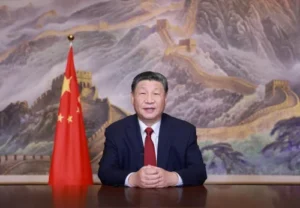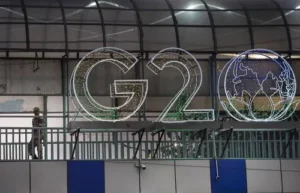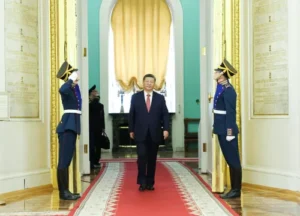A new narrative is unfolding in the Horn of Africa and it is one that defies the legacies of colonialism and reclaims Africa’s right to development on its own terms. With its dynamic economy and rich history, Ethiopia has become a key player in China’s Belt and Road Initiative (BRI). As BRICS+ expands its footprint with the joining of Ethiopia in 2024, the alignment that is between BRICS development goals and Chinese infrastructure investments is both inspiring and critical.
Reimagining Development Through BRICS
The BRICS bloc has always championed alternative models of development. These models challenge the conditions and ideological strings of the institutions in the Global North and emphasise sovereignty, mutual respect and practical cooperation. The BRICS framework calls for infrastructure-led development, financial independence from traditionally dominant Western lenders such as the World Bank and the IMF and equitable partnerships.
Ethiopia’s collaboration with China, particularly within the Belt and Road Initiative (BRI), exemplifies the BRICS vision of fostering physical and digital infrastructure, strengthening South-South cooperation, and promoting industrial growth across the Global South. The BRI, therefore, extends beyond a singular Chinese endeavor, embodying the core principles of the BRICS economic partnership.
The Addis Ababa-Djibouti Railway: Steel Tracks to Sovereignty
One of the most symbolic projects under the BRI of China is the Addis Ababa– Djibouti railway. Completed in 2016 with Chinese engineering and financing, the 750-kilometre electrified railway that connects landlocked Ethiopia to Djibouti’s Port– the lifeline for over 95% of Ethiopia’s exports and imports. This railway has significantly reduced the transport time from three days to less than 12 hours, improving trade efficiency, cutting costs and reshaping the architecture of logistics within the region.
Despite "debt trap" criticisms of Chinese infrastructure investments, Ethiopia’s experience with the Belt and Road Initiative offers a counter-narrative. The operational Addis Ababa–Djibouti Railway serves as a crucial element in Ethiopia’s economic development. Instead of defaulting, Ethiopia successfully negotiated debt restructuring with China in 2023, demonstrating a cooperative and flexible partnership unlike the strict austerity measures often imposed by Western creditors.
BRICS and Ethiopia: A Symbiotic Vision
Ethiopia’s 2024 entry into BRICS+ offers new opportunities for funding, technology exchange, and strategic partnerships. The New Development Bank (NDB), a BRICS initiative designed as an alternative to the World Bank, is now positioned to finance increased infrastructure development in East Africa. The NDB’s lending approach is specifically designed for developing nations, prioritizing sustainability and local involvement—principles often overlooked by conventional financial institutions.
For Ethiopia, this is a development model that is not only tailored to its unique challenges, but is also embedded in a bigger Global South coalition. The 10 year development plan of Ethiopia– centered on energy generation, industrial parks and digital transformation– emphasises BRICS’ prioritisation of inclusive and high impact development. China financing Ethiopia’s Industrial Parks in Adama and Hawassa, for example, has created thousands of jobs, especially for women, and it has also linked Ethiopia into global supply chains without the risk of compromising local control.
Ethiopia as a BRICS Beacon in Africa
Ethiopia’s increasing symbolic and strategic importance within the expanding BRICS framework is evident. As one of Africa’s most populous countries, a significant diplomatic center hosting the African Union, and a rising industrial force, Ethiopia’s engagement with both the Belt and Road Initiative (BRI) and BRICS is a conscious decision. This reflects Ethiopia’s strategic preference for infrastructure-driven development, South-South partnerships, and a multipolar world order, moving away from reliance on aid and traditional neoliberal approaches.
Amidst global inequality, climate instability, and geopolitical changes, the Global South, exemplified by countries like Ethiopia, is moving beyond passively receiving development aid. It is actively shaping its own path, redefining progress, and building resilience. Platforms like BRICS and the Belt and Road Initiative (BRI) are facilitating this shift, marking a new era of agency for Africa.A Future Built on CollaborationThe Ethiopia-China-BRICS alliance offers a compelling alternative to traditional development models in 2025. It demonstrates that development is a locally driven, negotiated process rooted in the needs of the people, rather than a uniform approach dictated by Western powers.
Ethiopia’s experience with the Belt and Road Initiative, especially as more Global South nations join BRICS and align with it, demonstrates that infrastructure development can be a source of liberation and that South-led development, fostered through empowering partnerships, ultimately benefits the global community.
Ethiopia’s experience exemplifies a BRICS-supported development model for the Global South, suggesting a broader renaissance across these nations.
Written By:
*Dr Iqbal Survé
Past chairman of the BRICS Business Council and co-chairman of the BRICS Media Forum and the BRNN
*Sesona Mdlokovana
Associate at BRICS+ Consulting Group
UAE & African Specialist
**The Views expressed do not necessarily reflect the views of Independent Media or IOL.
** MORE ARTICLES ON OUR WEBSITE https://bricscg.com/ (https://bricscg.com/)
** Follow @brics_daily (https://x.com/brics_daily?s=21) on X/Twitter for daily BRICS+ updates





